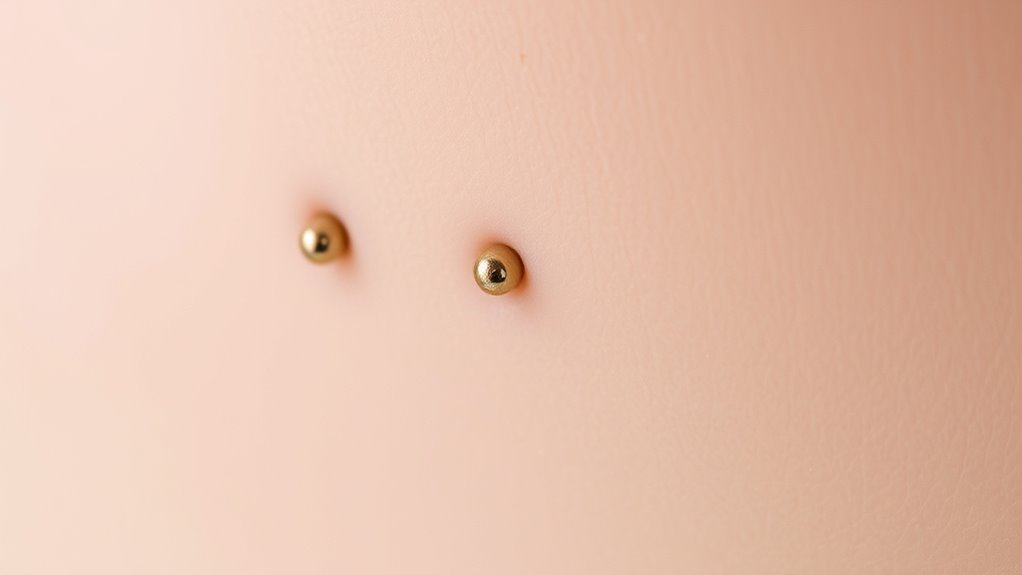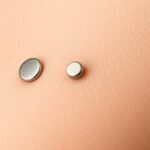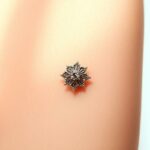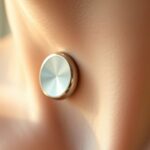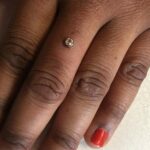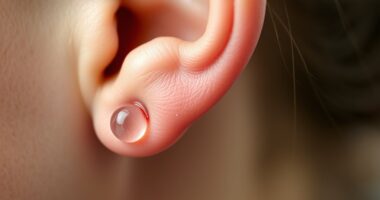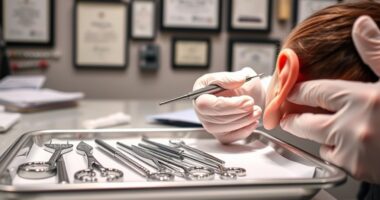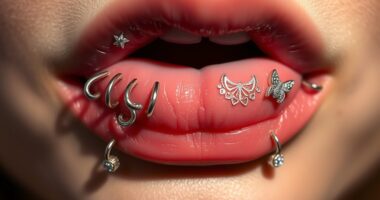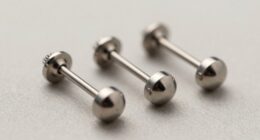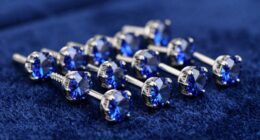Dermal anchors are a type of body modification that involves placing a small implant beneath your skin, creating a stable base for jewelry without visible exit points. Unlike traditional piercings, they don’t have holes through the skin but act as “piercings without exit points” because they stay embedded. Proper placement and care are essential to avoid complications like infection or migration. If you’re curious about how this unique modification works, you’ll find more details below.
Key Takeaways
- Dermal anchors are embedded beneath the skin, providing a stable platform for jewelry without external holes.
- Unlike traditional piercings, they do not have exit points or visible entry holes.
- Proper placement and healing are essential to prevent migration or infection.
- They are considered permanent modifications requiring ongoing maintenance.
- They are not tattoos and do not involve ink, but hygiene and care impact their longevity.
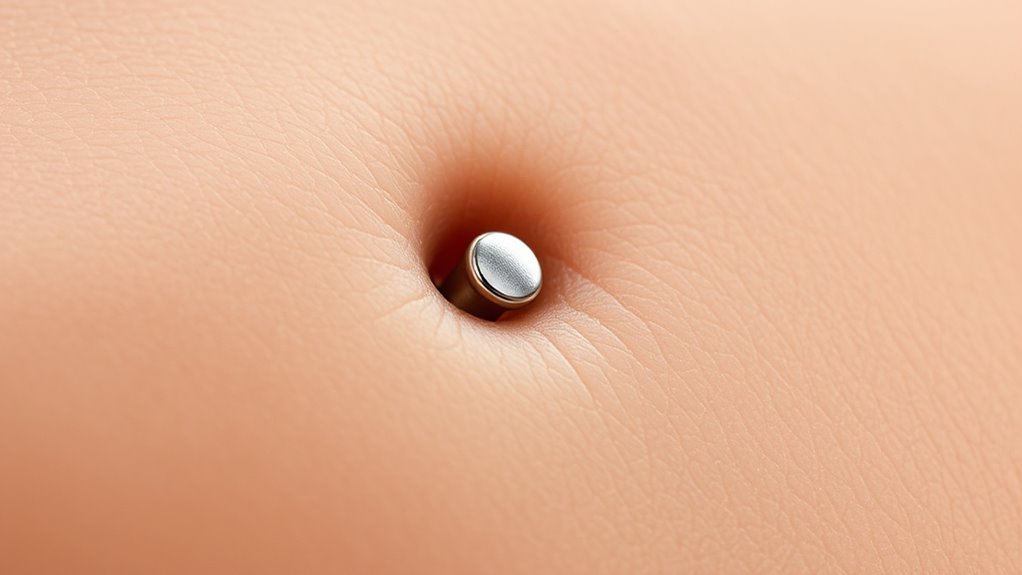
If you’re contemplating body modification, dermal anchors might catch your interest as a versatile and permanent option. Unlike traditional piercings that exit the body through a visible hole, dermal anchors are embedded beneath the skin, acting as a small, stable platform for jewelry. This means they’re often described as “piercings without exit points,” but understanding how they work is essential before deciding. One key aspect to weigh is ink safety. While dermal anchors typically don’t involve ink like tattoos do, they do require a precise insertion process that minimizes infection risk. Ensuring the procedure is performed by a trained professional is vital to avoid complications. Proper sterilization and the use of high-quality materials help prevent ink-related issues, as poor hygiene can lead to infections that compromise the healing process. During the initial healing period, you need to follow specific aftercare instructions to keep the area clean and reduce the risk of infection. This process usually takes several weeks and involves avoiding unnecessary touching or trauma to the site. The healing process for dermal anchors is different from traditional piercings because they are embedded under the skin, and healing depends heavily on your body’s response and aftercare. You might experience swelling, redness, or tenderness initially, but these symptoms should subside with proper hygiene and care. It’s important not to rush the healing, as premature removal or trauma can cause the anchor to become loose or migrate, leading to complications. Since dermal anchors are permanent, they require careful placement and maintenance. You should be aware that the healing process can be affected by your overall health, skin type, and any pre-existing conditions. Wearing loose or breathable clothing, avoiding excessive movement, and following your piercer’s guidelines will help your body adjust and secure the anchor properly. Understanding healing process and proper aftercare are crucial for a successful dermal anchor experience.
Frequently Asked Questions
How Long Do Dermal Anchors Typically Last?
Your dermal anchors usually last around 6 months to a year, but their durability lifespan depends on your skin type and care. To prolong their lifespan, follow proper maintenance tips like keeping the area clean and avoiding excessive pressure. Regular check-ups with your piercer help ensure they stay secure. With good care, you can enjoy your dermal anchors longer, making them a safe and stylish choice.
Are Dermal Anchors Suitable for All Skin Types?
Your skin compatibility with dermal anchors is vital, and it’s not a one-size-fits-all situation. Everyone’s skin reacts differently, making the healing process unique for each person. While some skin types handle dermal anchors effortlessly, others may face irritation or rejection. Consult a professional first, especially if you have sensitive or problematic skin. Ultimately, understanding your skin’s needs guarantees you make the best decision for a safe, successful piercing experience.
What Are the Signs of a Rejected Dermal Anchor?
You might notice signs of a rejected dermal anchor if you see persistent redness, swelling, or tenderness around the site. Sometimes, the area may become itchy or develop a bump, indicating the healing process is going awry. Be aware that rejection increases infection risks and can cause the anchor to loosen or push out. If you experience these symptoms, consult your piercer promptly to prevent complications and make certain of proper healing.
Can Dermal Anchors Be Removed Safely at Home?
Thinking about DIY removal? While it might seem tempting, you should prioritize home safety. Removing dermal anchors at home can lead to infection or scarring if not done properly. It’s best to consult a professional rather than attempt DIY removal, ensuring a safer, smoother process. Remember, your well-being matters more than quick fixes, so seek expert help for the removal of dermal anchors.
Do Dermal Anchors Require Special Aftercare?
Yes, dermal anchors need special aftercare to guarantee proper healing. During the healing process, you should keep the area clean and dry, avoid touching it unnecessarily, and follow your piercer’s instructions. This helps prevent infection and promotes healing. Be vigilant about infection prevention by watching for redness, swelling, or discharge. Proper aftercare minimizes complications and ensures your dermal anchor stays secure and healthy.
Conclusion
Dermal anchors truly are like piercings without exit points, offering a unique way to decorate your body. With over 20,000 dermal anchor procedures performed annually in the U.S. alone, it’s clear they’re gaining popularity. If you’re considering one, make sure to choose a skilled professional for safety and best results. Remember, these tiny implants can last for years when cared for properly, making them a fascinating blend of body art and modern technology.

